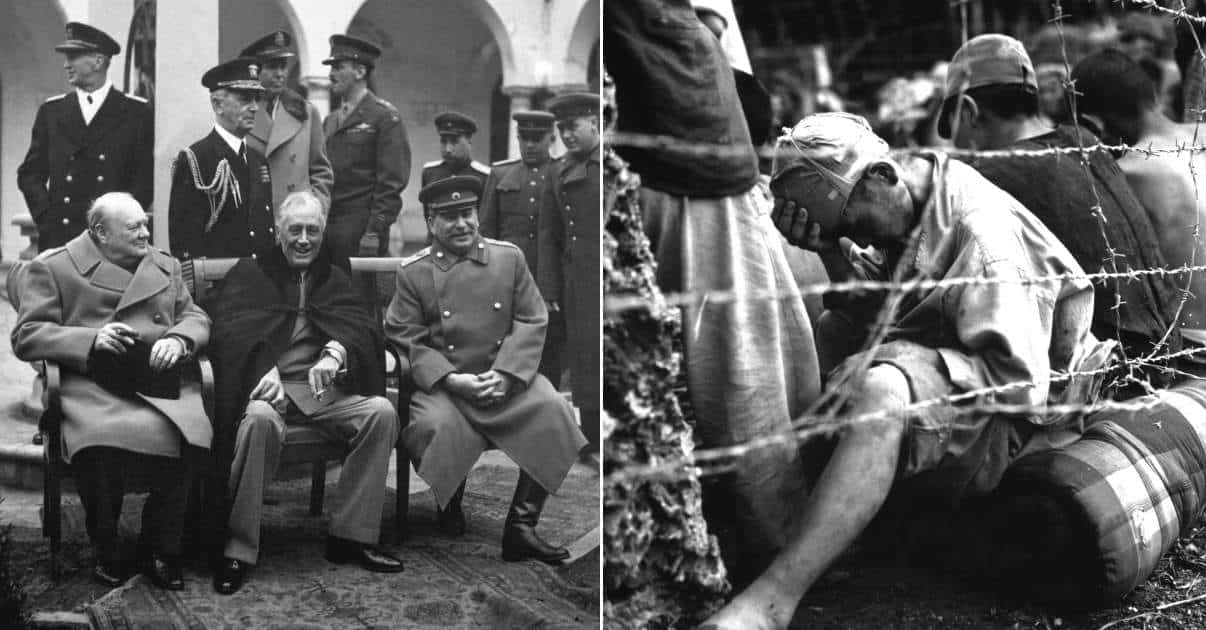As Hawkeye Pierce poignantly quipped “war is war, and hell is hell. And of the two, war is a lot worse…There are no innocent bystanders in hell. War is chock full of them — little kids, cripples, old ladies. In fact, except for some of the brass, almost everybody involved is an innocent bystander.” Despite the unquestionable justness of the Allies in seeking victory and defeating the Axis powers during World War Two, there is no denying that at times the liberating forces of supposed good crossed the line into monstrosity themselves. Although incomparable to the ultimate evils of the Third Reich or Japanese Empire, a crime – or in these instances the violation of international law and basic human decency – does not justify or excuse another. Some such instances, like the bombing of Dresden in 1945, remain a topic of considerable moral debate while other atrocities have become lost to popular memory and consigned to the annals of history.

Here are 20 atrocities committed by the Allies during the Second World War that have been largely forgotten, but definitely should not be:

20. German POWs peacefully awaiting repatriation at Salina, Utah, were massacred in their sleep by a U.S. Army Private
During World War Two, the U.S. state of Utah houses approximately 15,000 Axis POWs, among them Camp Salina. Occupied by 250 German POWs captured two years prior in North Africa, these prisoners were located in Salina to assist the local population with the harvest and were reported by the Salt Lake Tribune as being well-behaved and friendly. On July 8, 1945, two months after the surrender of Germany and the cessation of hostilities in the European theatre, U.S. Army Private Clarence Bertucci decided to execute the incarcerated prisoners of war in direct violation of international law.
Climbing a guard tower, Bertucci loaded a mounted .30 caliber M1917 Browning light machine gun and opened fire at tents filled with sleeping German prisoners. Hitting 30 of the 43 tents with a barrage of 250 rounds in only 15 seconds, Private Bertucci was eventually removed from the tower whilst shouting “Get more ammo! I’m not done yet!”. Six German POWs were killed immediately, whilst a further 3 died due to their wounds and an additional 20 were injured; the victims were between 24 and 48 years old. One such fatally wounded prisoner was described as “nearly cut in half”, living for a further six hours in agony, and “blood flowed out of the front door” of the hospital according to contextual reports.
Already convicted at two previous court-martials, Private Bertucci informed investigators he had hoped for a combat assignment and the opportunity to kill Germans during the war; with that no longer possible, he seized his opportunity to do so at Salina. Justifying his actions by saying he “just didn’t like Germans”, Bertucci was declared medically insane and died in a mental institution in 1969.

